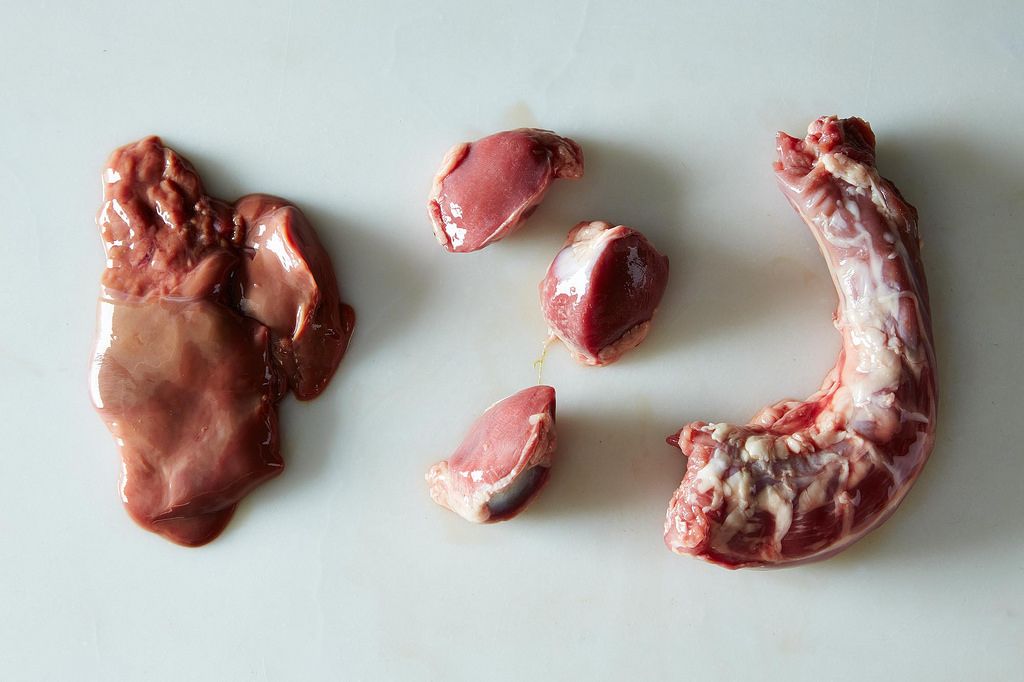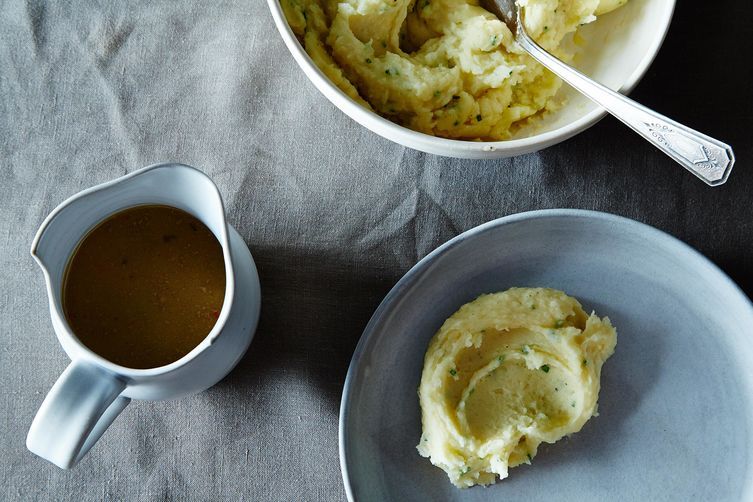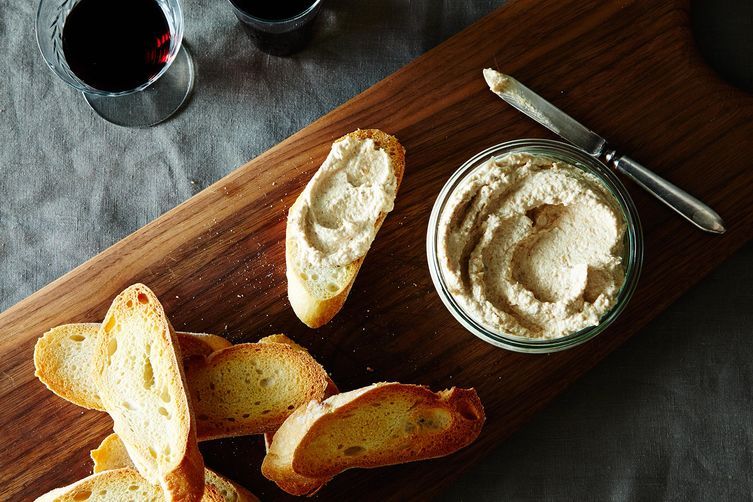Each week, Cara Nicoletti of The Meat Hook is helping us get to know our favorite cuts a little bit better – and introducing you to a few new ones, too. Read on, study up, then hightail it to your nearest butcher.
Today: Now that you know how to turn your chicken bones into stock, it's time to make use of some of the nastier bits. We're turning gizzards and fat into flavorful gravy and schmaltz.

Pictured: Chicken liver, hearts, and neck.
Last week we talked about minimizing waste and put our knife skills to the test when we broke down a chicken and used the bones and wings to make a hearty homemade stock. If we really, truly want to waste as little as possible, though, there are still some extra delicious bits left inside of our chickens that we haven’t talked about yet.
Breaking down a chicken and using up every last bit of it is an exercise in nose-to-tail eating on a miniature scale -- it’s much more manageable to do in your home kitchen than, say, breaking down an entire cow and using up every part, but equally as important. It’s exciting and empowering, too! So what’s left after all the chicken pieces have been roasted and your stock is boiling away? Giblets and fat. Chickens are the gifts that keep on giving!
The giblets are what’s hiding in that little bundle stuffed inside your chicken cavity that maybe you’ve left in there a couple of times and wondered why your chicken was taking so long to roast. That soggy package you throw into the garbage without a glance is full of goodness, so let’s give it a second look.

The giblets are comprised of the chicken neck, liver, heart, and gizzards. We’ve talked about heart and liver before, so it’s not really a secret that they’re delicious, but gizzards are slightly less common. Gizzards are a digestive organ that helps chickens break down and grind up their food. While none of that may sound very appetizing, when the gizzards are cooked down with the rest of the giblets and mixed with pan drippings from your roast chicken and flour and homemade stock, they make the most flavorful gravy you have ever tasted. Once you’ve roasted your chicken parts for eating and your carcass for making stock, be sure to save the pan drippings so you can make this gravy!
Chicken Giblet Gravy
Makes 1 1/2 to 2 cups
1 1/2 tablespoons unsalted butter
1/2 small yellow onion, peeled and diced
1 celery rib, diced
1 carrot, peeled and roughly chopped
1 sprig thyme
1/2 bay leaf
Chicken giblets (neck, heart, liver, and gizzards)
Drippings from 1 roasted chicken carcass
1 tablespoon all-purpose flour
Freshly cracked black pepper, to taste
Salt, to taste
See the full recipe (and save and print it) here.

In the process of breaking down your chicken, you probably noticed that there is a good deal of extra fat, especially surrounding the cavity. Once the chicken has been broken into parts, this excess fat remains on the carcass, and since it will only make your job of skimming the fat off of the stock harder, let’s remove it and put it to good use. Rendered chicken fat is also called schmaltz; in my opinion, it is one of the very best parts about taking a whole chicken home.
FUN SCHMALTZ FACT: It’s rumored that foie gras is a byproduct of Ashkenazi Jews (who were unable to cook their meat with butter because of dietary laws) overfeeding their poultry to create birds that yielded more fat for cooking.
Schmaltz makes a great cooking fat: If you can’t tolerate dairy, but you’re looking for something more richly flavored than oil to mimic butter, schmaltz is your miracle. Cook your vegetables in it, add it to your rice, or just throw all caution to the wind and spread it on some good bread. This is my favorite way to eat schmaltz, rendered down with apples and onions until they are golden and falling apart. Your kitchen will smell amazing, and your bread will taste really, really good.

Apple and Onion Schmaltz
Makes 1 pint
Fat and excess skin from one chicken (cut it out from the opening of the cavity and also remove it from the bottom of the carcass after you break the chicken into pieces)
1 small, tart apple, unpeeled and roughly chopped
1 small yellow onion, peeled and roughly chopped
1 sprig thyme
Salt and pepper to taste
See the full recipe (and save and print it) here.
Photos by James Ransom






See what other Food52 readers are saying.